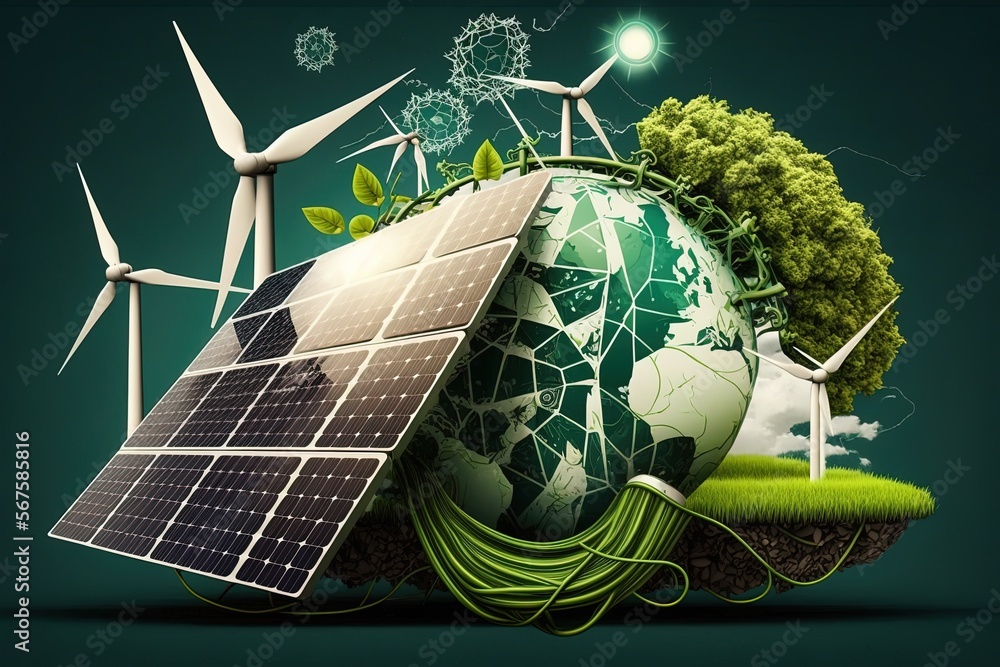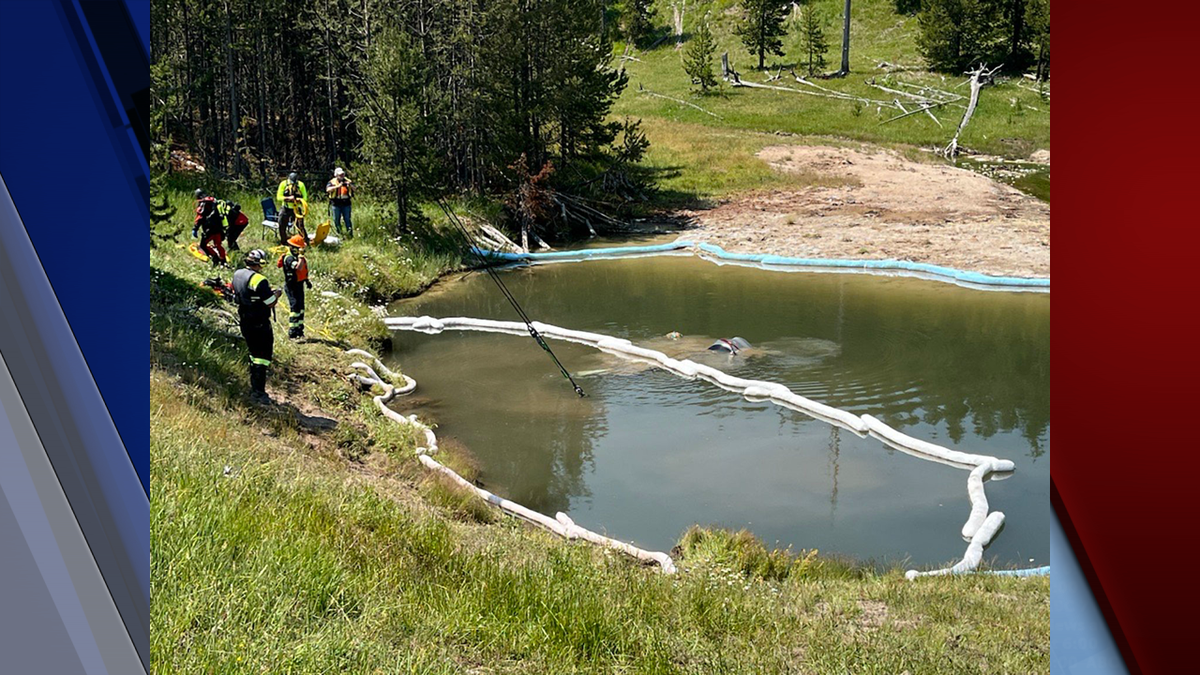Wind Energy For Trains: A Sustainable Solution For Rail Transport

Table of Contents
Harnessing Wind Power for Railway Electrification
Integrating wind energy into the rail system presents several innovative approaches:
-
On-board wind turbines: Individual trains could be equipped with small wind turbines to supplement their power needs. While this offers a degree of self-sufficiency, the energy generated is likely to be limited, particularly at lower speeds. Furthermore, the added weight and potential aerodynamic drag could impact overall efficiency. Advancements in lightweight, high-efficiency turbine design are crucial for the viability of this approach.
-
Wind farms along railway lines: A more scalable and efficient solution involves establishing wind farms strategically positioned along railway lines. These wind farms can feed directly into the national grid, providing renewable energy to power electric trains. This approach leverages the existing railway infrastructure and benefits from the economies of scale associated with large-scale wind power generation. The efficiency of this model depends on factors such as wind resource availability and grid connection capabilities.
-
Hybrid power systems: Combining wind energy with other renewable sources like solar and hydropower creates a robust and diversified energy supply for the rail network. Hybrid systems can mitigate the intermittency inherent in wind power, ensuring a consistent and reliable power source for trains. This integrated approach maximizes renewable energy utilization and enhances the overall sustainability of the rail system. This requires careful planning and integration of different renewable energy technologies.
Technological advancements in wind turbine technology are vital for railway applications. This includes developing turbines that are robust enough to withstand the vibrations and environmental conditions encountered along railway lines, while also being lightweight and aerodynamically efficient. Research into innovative blade designs, control systems, and energy storage solutions is crucial for improving the efficiency and reliability of railway electrification using wind power.
Economic Viability and Cost-Effectiveness of Wind-Powered Trains
The initial investment in wind energy for rail transport may seem substantial. Building wind farms along railway lines, installing on-board turbines, or upgrading existing infrastructure to accommodate renewable energy integration all require significant upfront capital. However, a comprehensive cost-benefit analysis reveals long-term economic advantages.
-
Long-term operational costs: The operational costs of wind-powered trains are significantly lower than those of diesel trains, owing to the reduced reliance on expensive fossil fuels. Furthermore, the decreasing cost of wind turbine technology contributes to reducing the overall long-term expense.
-
Government incentives: Governments worldwide are increasingly incentivizing the adoption of renewable energy through renewable energy incentives, such as tax breaks, subsidies, and carbon credit mechanisms. These incentives can significantly reduce the initial investment costs and make wind energy for trains a more economically attractive option. Carbon pricing mechanisms further incentivize the shift from fossil fuel-based transport.
A thorough economic feasibility study, considering all factors, including the long-term cost savings and government support, is essential to demonstrate the economic viability of wind-powered rail transport.
Environmental Impact and Sustainability Benefits
The environmental benefits of using wind energy for trains are substantial. Switching from diesel or even conventional electricity generation to wind power dramatically reduces the carbon footprint of rail transport.
-
Greenhouse gas emissions: Wind energy is a clean energy source, producing virtually no greenhouse gas emissions during operation. Replacing fossil fuels with wind power significantly reduces the rail sector’s contribution to climate change. Quantifying this carbon footprint reduction is crucial for demonstrating the environmental advantages.
-
Improved air quality: By eliminating or reducing reliance on fossil fuels, wind-powered trains contribute to improved air quality in and around railway lines, benefiting both human health and the environment.
-
Sustainable development goals: The transition to wind energy for trains aligns with the global commitment to sustainable development goals, particularly those aimed at climate action and clean energy. This aligns with national and international green energy policies and strategies. The contribution to mitigating climate change makes wind power a key component of responsible rail transport.
Challenges and Future Prospects of Wind Energy in Rail Transport
Despite its potential, several challenges need to be addressed to fully realize the potential of wind energy in rail transport:
-
Intermittency of wind power: Wind is an intermittent energy source, meaning its availability fluctuates depending on weather conditions. Effective energy storage solutions are necessary to ensure a consistent power supply for trains, especially during periods of low wind speed. This could include battery storage or pumped hydro storage integrated with the wind farms.
-
Grid integration: Integrating wind energy into the existing rail infrastructure requires careful planning and coordination. Ensuring seamless grid integration is crucial to avoid disruptions to train operations. This requires upgrades to the national grid to accommodate the intermittent nature of wind power.
-
Policy and regulation: Favorable policy and regulation are essential to encourage investment in and deployment of wind energy for trains. Clear regulatory frameworks, streamlined permitting processes, and supportive government policies are crucial.
Future research and development should focus on improving the efficiency, reliability, and cost-effectiveness of wind energy solutions for trains. This includes advancements in wind turbine technology, improved energy storage systems, and smarter grid integration strategies. Addressing these challenges is paramount to unlocking the full potential of wind energy in transforming the rail transport sector.
Conclusion: Embracing Wind Energy for a Greener Rail Future
The advantages of using wind energy to power trains are clear: substantial environmental benefits, long-term cost savings, and a significant contribution to sustainable development. While challenges exist concerning intermittency, grid integration, and regulatory frameworks, these are surmountable with focused research, development, and policy support.
We urge policymakers, the rail industry, and investors to seriously explore and invest in the potential of wind energy for trains. This is a crucial step toward creating a more sustainable and environmentally friendly transportation system, reducing our reliance on fossil fuels, and mitigating the impacts of climate change. Embracing renewable energy solutions like wind power for rail transport is not just a technological imperative; it’s a responsibility towards a greener future for generations to come. The transition to sustainable rail transport powered by green energy including wind energy solutions is essential for achieving a sustainable transport future.

Featured Posts
-
 Bukan Sekadar Sampah Cangkang Telur Sumber Nutrisi Untuk Tanaman Dan Hewan
May 04, 2025
Bukan Sekadar Sampah Cangkang Telur Sumber Nutrisi Untuk Tanaman Dan Hewan
May 04, 2025 -
 Shaun T Calls Out Lizzos Ozempic Comments A Fitness Trainers Perspective
May 04, 2025
Shaun T Calls Out Lizzos Ozempic Comments A Fitness Trainers Perspective
May 04, 2025 -
 Police Investigating Fatal Seven Victim Crash Near Yellowstone National Park
May 04, 2025
Police Investigating Fatal Seven Victim Crash Near Yellowstone National Park
May 04, 2025 -
 Western Conference Wild Card Battle Nhl Playoff Standings Breakdown
May 04, 2025
Western Conference Wild Card Battle Nhl Playoff Standings Breakdown
May 04, 2025 -
 Keir Starmers New Immigration Policy A Response To The Farage Challenge
May 04, 2025
Keir Starmers New Immigration Policy A Response To The Farage Challenge
May 04, 2025
Latest Posts
-
 Paddy Pimbletts Post Fight Yacht Party Ufc 314 Celebration
May 04, 2025
Paddy Pimbletts Post Fight Yacht Party Ufc 314 Celebration
May 04, 2025 -
 Ufc 314 Pay Per View Revised Bout Order
May 04, 2025
Ufc 314 Pay Per View Revised Bout Order
May 04, 2025 -
 Ufc Announces Fight Order Alterations For Ufc 314 Ppv
May 04, 2025
Ufc Announces Fight Order Alterations For Ufc 314 Ppv
May 04, 2025 -
 Updated Fight Card Ufc 314 Pay Per View Event Changes
May 04, 2025
Updated Fight Card Ufc 314 Pay Per View Event Changes
May 04, 2025 -
 Ufc 314 Revised Fight Order Revealed For Pay Per View
May 04, 2025
Ufc 314 Revised Fight Order Revealed For Pay Per View
May 04, 2025
